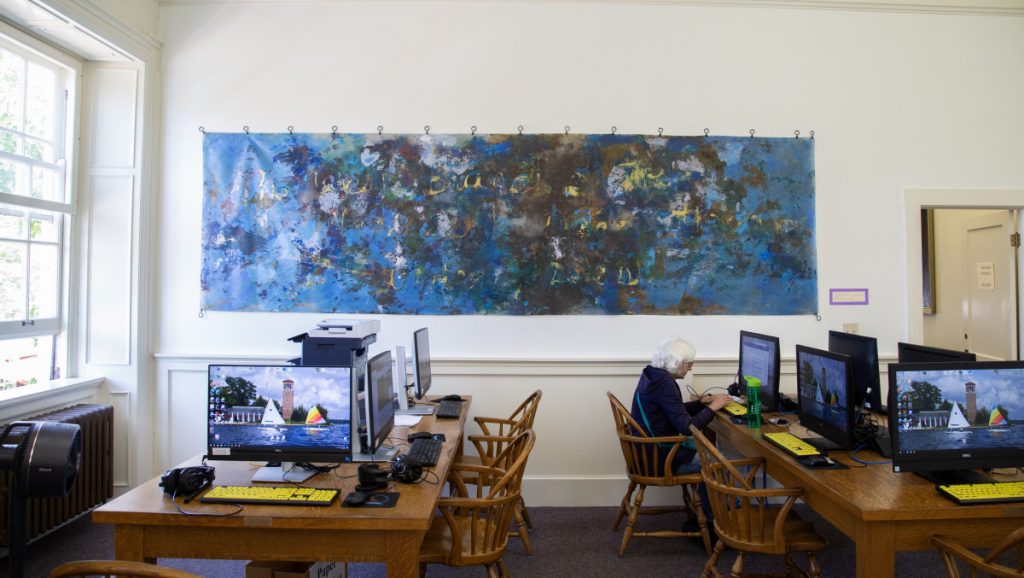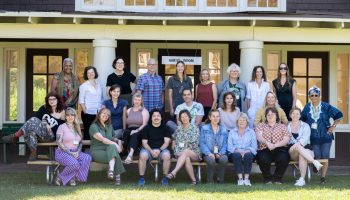

Emma Francois
Contributing Writer
There’s a new art installment open for viewing in the Smith Memorial Library: a banner of harmonious cacophony; muddy browns and cloudy, then sparkling blues feed into each other; revealing, then obscuring a radiant golden script, a signature characteristic of Hovey Brock’s paintings.
While the text is, intentionally, barely legible, designed to encourage the viewer to sit with the work longer, the title of Brock’s aforementioned work reads: “The West Branch of the Neversink Under Threat Under Stress,” a reference to his home’s susceptibility to invasive species.
“It’s hard for me to talk about,” Brock said. “That wearing away is that wiping away of an order that is no longer going to be useful for future generations. That text disappearing is really about the entropy of a system that is no longer viable.”
Brock, an artist, writer, and climate activist, will deliver his lecture “The Art of Invasive Species” at 12:15 p.m. today in Smith Wilkes Hall for the Bird, Tree & Garden Club. He’ll discuss the origins of his Crazy River Project, a multimedia exploration of climate change through a personal lens: his neck of the Catskills, the West Branch of the Neversink, a corruption of the original Lenape name for the “crazy river.”
Brock draws inspiration from expressionist artists like Cy Twombly and Jean-Michel Basquiat, as well as the Impressionist painter Claude Monet; Brock is particularly inspired by the paintings of water lilies he grew up visiting in person as a child living briefly in Paris.
“In order to really wrap our minds around the climate crisis, we really have to start thinking more in terms of interacting fields of energy,” Brock said. “That’s really what you get in a Monet painting. You get these incredible areas of color overlapping and going up against each other. I’m trying to think about my relationship to the environment in terms of these interlocking energetic fields, which I think Monet does so well.”
The turbulent amalgamation of blues and browns evokes the tempestuousness of an overflowing river, while calling to mind the fragility of the ecosystem in contrast with the threat of invasive species and human interference. The interplaying colors and energies emphasize the paradox that through embracing this fear, loss, and grief comes a kind of actionable hope — reflecting the river’s highs and lows.
Art like Brock’s documents the numerous challenges our landscapes face, while also telling a story of deep spiritual and intrinsic connection with the landscapes that provide the backdrops to our lives, and to the communities that we share them with. Creating a piece of art like this one, or taking the time to decode works like Brock’s, removes a distance between our fates and the fates of our land.
“The climate crisis has gotten so politicized, so mired in technicalities,” Brock said, “to really bring home the impact, to make it meaningful to people, is to create a narrative that’s relatable, that’s personable, that has a scale that people can wrap their minds around. My story is about growing up in this land that I love and seeing these changes.”




